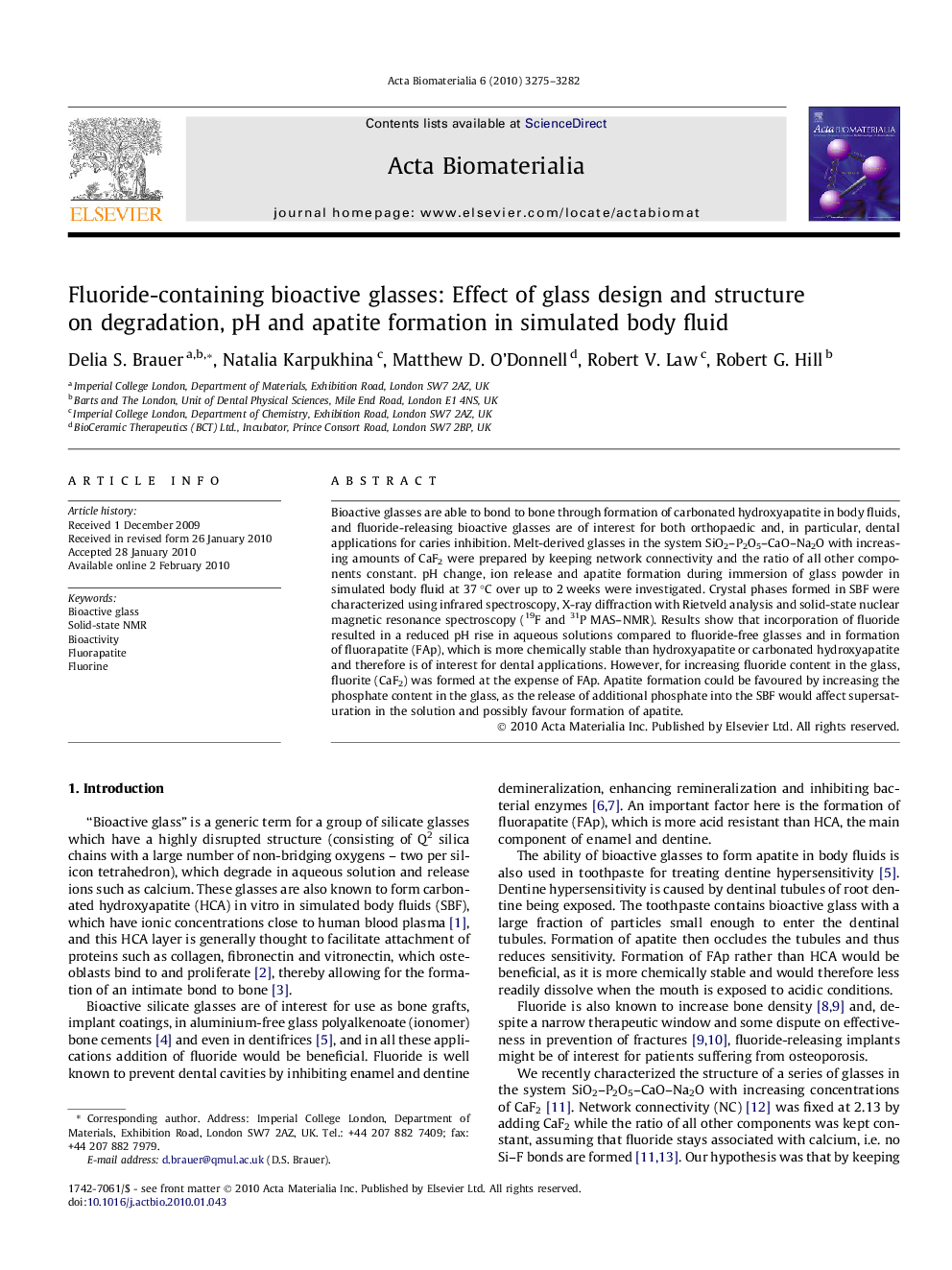| کد مقاله | کد نشریه | سال انتشار | مقاله انگلیسی | نسخه تمام متن |
|---|---|---|---|---|
| 2293 | 107 | 2010 | 8 صفحه PDF | دانلود رایگان |

Bioactive glasses are able to bond to bone through formation of carbonated hydroxyapatite in body fluids, and fluoride-releasing bioactive glasses are of interest for both orthopaedic and, in particular, dental applications for caries inhibition. Melt-derived glasses in the system SiO2–P2O5–CaO–Na2O with increasing amounts of CaF2 were prepared by keeping network connectivity and the ratio of all other components constant. pH change, ion release and apatite formation during immersion of glass powder in simulated body fluid at 37 °C over up to 2 weeks were investigated. Crystal phases formed in SBF were characterized using infrared spectroscopy, X-ray diffraction with Rietveld analysis and solid-state nuclear magnetic resonance spectroscopy (19F and 31P MAS–NMR). Results show that incorporation of fluoride resulted in a reduced pH rise in aqueous solutions compared to fluoride-free glasses and in formation of fluorapatite (FAp), which is more chemically stable than hydroxyapatite or carbonated hydroxyapatite and therefore is of interest for dental applications. However, for increasing fluoride content in the glass, fluorite (CaF2) was formed at the expense of FAp. Apatite formation could be favoured by increasing the phosphate content in the glass, as the release of additional phosphate into the SBF would affect supersaturation in the solution and possibly favour formation of apatite.
Journal: Acta Biomaterialia - Volume 6, Issue 8, August 2010, Pages 3275–3282